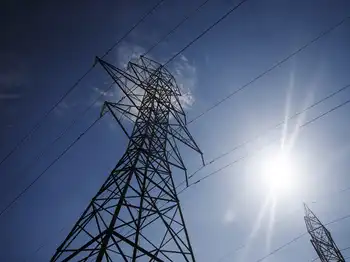UK risks power crunch by 2012
By Reuters
Protective Relay Training - Basic
Our customized live online or in‑person group training can be delivered to your staff at your location.

- Live Online
- 12 hours Instructor-led
- Group Training Available
Recession has eroded power demand temporarily but consumption is likely to rebound when the economy recovers.
Project delays and cancellations during the credit crunch mean a power generation gap, which many expect to hit the country from 2015 after old nuclear and coal-fired power stations shut, could arise earlier.
"In our worst-case analysis, the energy crunch could be as early as 2012. More likely you are looking at 2013 or 2014," said Ian Parrett, a market analyst at energy consultancy Inenco.
"It's time for the government to invest directly.... As we come out of recession, do we go back to the same energy intensive approach... or can we find a smarter way to recover in a less energy intensive way, which would take off some of the pressure," he said.
Long-term breakdowns of some nuclear power stations over the last two years have increased the pressure on power supply because coal-fired plants, which are limited in the time they can run by European environmental rules, have used up their allotted operating hours more quickly.
Ian Marchant, chief executive of Scottish and Southern Energy, told Parliament that Britain would lose 14-18 gigawatts of capacity by 2015 — about of third of the capacity it needs to meet peak demand.
The government may not allow more coal plants to be built until technology to capture and bury their climate-warming gases is shown to work on a large scale, while new nuclear plants are unlikely to be built until at least 2017.
So most of the new capacity needed to replace the retired plants will have to come from gas-fired projects and renewables.
Marchant estimated that some 46 renewable energy projects with a total capacity of about 5 GW were already underway, and about 7 GW of new gas plants were being built.
This will raise the share of gas in Britain's power supply to about 60 percent by 2020, increasing dependence on a fuel that is expected to be 80 percent imported by then.
Gas fired plants could, and may have to, fill the gap left by the old nuclear and coal fired plants but reliance on one fuel for so much of the country's electricity is seen by many in industry and government as risky, especially after Russia cut supplies to parts of Europe in January.
"Sustaining the level of renewable investment... over the next couple of years is simply a challenge," said Fabien Roques of Cambridge Energy Research Associates, based in Paris.
"It is much more difficult to finance projects. More support from the UK government might be necessary to keep the same pace on renewable investment."
Climate economist Lord Stern earlier this month urged London to raise its spending on green energy to combat carbon emissions, arguing it could save Britain billions of pounds in the long term.
At the same time, carbon emissions prices have slumped by about half this year, making investment in renewable energy less attractive to investors.
As bank lending for clean energy projects dries up, the U.S. Congress has agreed a $789-billion (553 billion pounds) economic stimulus package that would pump billions into the sector.
Britain's nascent green energy sector may need a similar boost to get through this economic crisis and avoid another power crisis in the next decade.
"You are talking certainly in terms of tens of billions of pounds, if you really want to make a significant difference," Parrett from Inenco said, adding that public funding for a new grid to bring electricity from offshore wind farms would be sensible.
"Infrastructure to me is the place to look," he said. "There's 33 GW of offshore wind (to be built). But there's no way to bring the power onshore at the moment."
International Energy Agency analyst Brian Ricketts said utilities could make existing fossil fuel fired power stations comply with the European Union's Large Combustion Plant Directive (LCPD) if there is a financial incentive to do it.
"The capacity exists in the UK. The question is will the capacity be clean enough to operate," he said, referring to the limits on coal or oil fired plant operation unless they are fitted with clean-up equipment.
"There's still time to make the necessary upgrade to power plants to meet the LCPDÂ…. What industry is looking for is some certainties they can have on returns on that investment."











